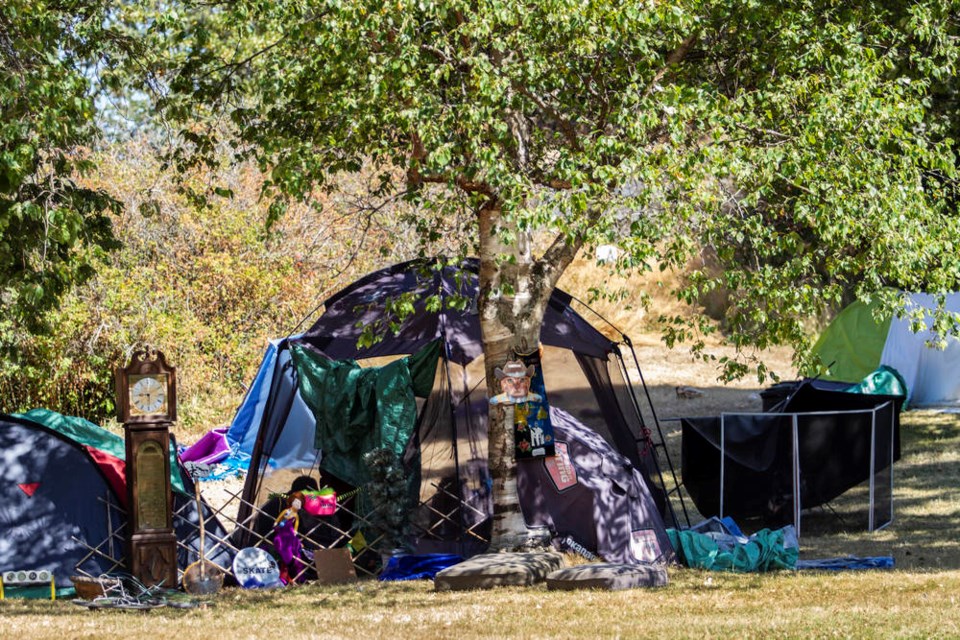Is the challenge of homelessness in our region being driven by in-migration of people who are already experiencing homeless from other regions?
Would they keep filling up Beacon Hill Park even if we housed those that are currently there? No.
The 2020 Point in Time survey tells us that the people experiencing homelessness in the region have overwhelmingly lost their housing while living in the region, and that high rents, low vacancy rates, and low wages across the region are driving homelessness in Greater Victoria.
Point-in-Time (PiT) Counts are a measure of the minimum number of people experiencing homelessness on a single night. The PiT Count process includes a survey to ask people experiencing homeless about their history, background and needs. The survey results provide a human face to homelessness that aids the community in preventing and addressing homelessnes.
On the night of March 11, 2020, the PiT tallied at least 1,523 people experiencing homelessness across Greater Victoria, and of those, 854 individuals were surveyed. A large majority (84 per cent) of those surveyed have lived in the region for a year or longer, including 42 per cent who have lived here for over five years, and 22 per cent who have lived here their entire lives.
There is a common assumption that housing and homelessness services are drawing people experiencing homels sness to move to the region, increasing demand and making the homeless situation worse. That is not seen in the PiT data.
The top reasons people in the PiT Survey moved here were: because family moved here, to be with family or friends, and to find employment. Individuals also report moving here to access medical services, to attend school, fear for safety due to personal circumstances, amongst many other reasons.
Only a small fraction of individuals who moved to Victoria were already experiencing homelessness.
The real story is that people who live here are falling into homelessness, whether they arrived in recent years or have always lived here. It is a system-wide regional challenge with multiple causal factors including systemic factors, structural factors and individual’s personal circumstances.
Further, the homelessness crisis has roots in Greater Victoria’s housing crisis. A recent Nanos poll showed that 11 per cent of Canadian renters have been homeless, and 25 per cent are worried about coming up with rent for August. Two-thirds of households in the city of Victoria are renters, meaning we can expect those numbers to be higher in Victoria especially since 46 per cent of Canadians entered the pandemic $200 from insolvency.
Greater Victoria’s unemployment rate is at its highest since the Great Depression. If the COVID-19 ban on evictions is lifted, homeless numbers could jump. If CERB and other COVID benefits end, homelessness could skyrocket.
The provincial, regional and municipal governments, in collaboration with local service agencies, have been working hard to keep people experiencing housing instability safe since the pandemic struck. Our entire community benefits from this collective effort.
More than 600 people have been housed indoors since the the pandemic began. Important progress has been made in addressing the unprecedented challenge of the converging emergencies of the COVID-19 pandemic, the opioid epidemic and the homelessness crisis.
Those safety measures have continued to include encampments because, as the B.C. Centre for Disease Control and Ministry of Health’s guidelines state: “Clearing or moving encampments without providing shelter or housing immediately can cause people to disperse throughout the community and break connections with service providers. This increases the potential for infectious disease spread and may lead to isolation, which also poses health and safety risks to vulnerable people.”
Encampments are not a solution to homelessness, but are in fact a symptom of the ongoing challenges in the region: high rents, low vacancy rates, low incomes and employment insecurity. Reaching zero people experiencing homelessness in the region is the ultimate goal of the agencies and community members.
Diana Gibson is executive director of the Community Social Planning Council of Greater Victoria; Kelly Roth is executive director of Greater Victoria Coalition to End Homelessness.



